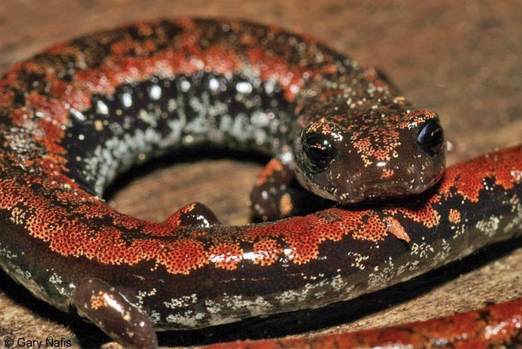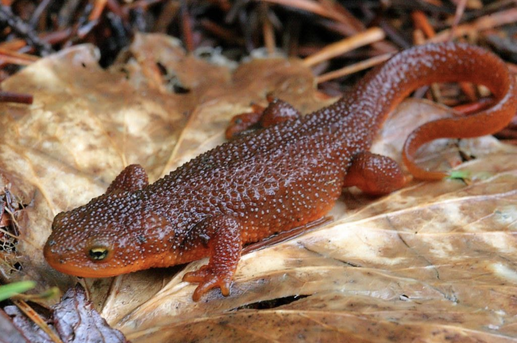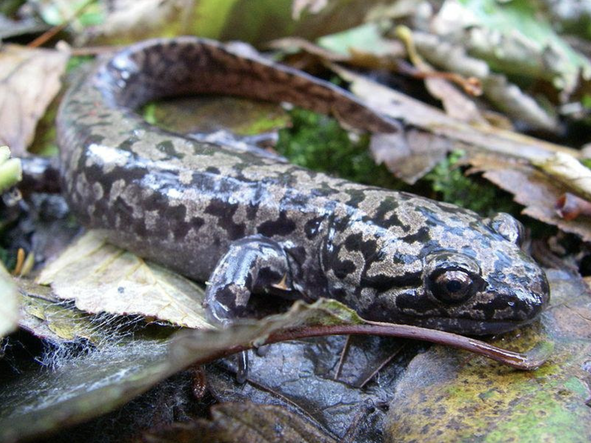SALAMANDERS
Why go walking in the Canyon on a rainy day?
You may find a salamander!

Salamanders also rely on aquatic environments for breeding and the growing of their larvae, who, like frog tadpoles, rely on the water body they were laid in for food and safe places to hide from predators. This includes an environment free of water flow obstructions. During the ongoing restoration effort of Reed Canyon, diversions such as the old swimming pool were abolished and, in conjunction with the city of Portland, culverts all throughout the Crystal Springs Creek were replaced with wildlife-friendly under-road passes.
In addition, salamanders require undisturbed natural features such as logs and rocks to live in. The creation of designated foot trails helps keep people from disturbing salamander habitat.
The sightings of salamanders (big and small) in the Reed Canyon delights any nature lover and provokes curiosity in the minds of students. They are fragile creatures, but with adequate care for the environment they rely on, the Reed Canyon salamanders can keep bringing delight to rainy day walks for everyone.
Bibliography:
Zac’s Lecture (2021)
College, Reed. “Reed College Canyon.” Reed College | Canyon | Student Research, www.reed.edu/canyon/student_research/index.html.
“Salamanders: Oregon Department of Fish & Wildlife.” Salamanders | Oregon Department of Fish & Wildlife, myodfw.com/wildlife-viewing/species/salamanders.
Byland, Steve. “Rough-Skinned/Oregon Newt.” Flickr, Yahoo!, 16 May 2007, www.flickr.com/photos/steve_byland/500851072/.
Northwest Reptiles and Amphibians. “Oregon Slender Salamander - Batrachoseps Wrightorum.” Californiaherps.com, www.californiaherps.com/noncal/northwest/nwsalamanders/pages/b.wrightorum.html.
“Recovery Strategy for the Pacific Giant Salamander (Dicamptodon Tenebrosus) in British Columbia.” Friends of Ecological Reserves, 8 Feb. 2013, ecoreserves.bc.ca/2010/04/07/recovery-strategy-for-the-pacific-giant-salamander-dicamptodon-tenebrosus-in-british-columbia/.


